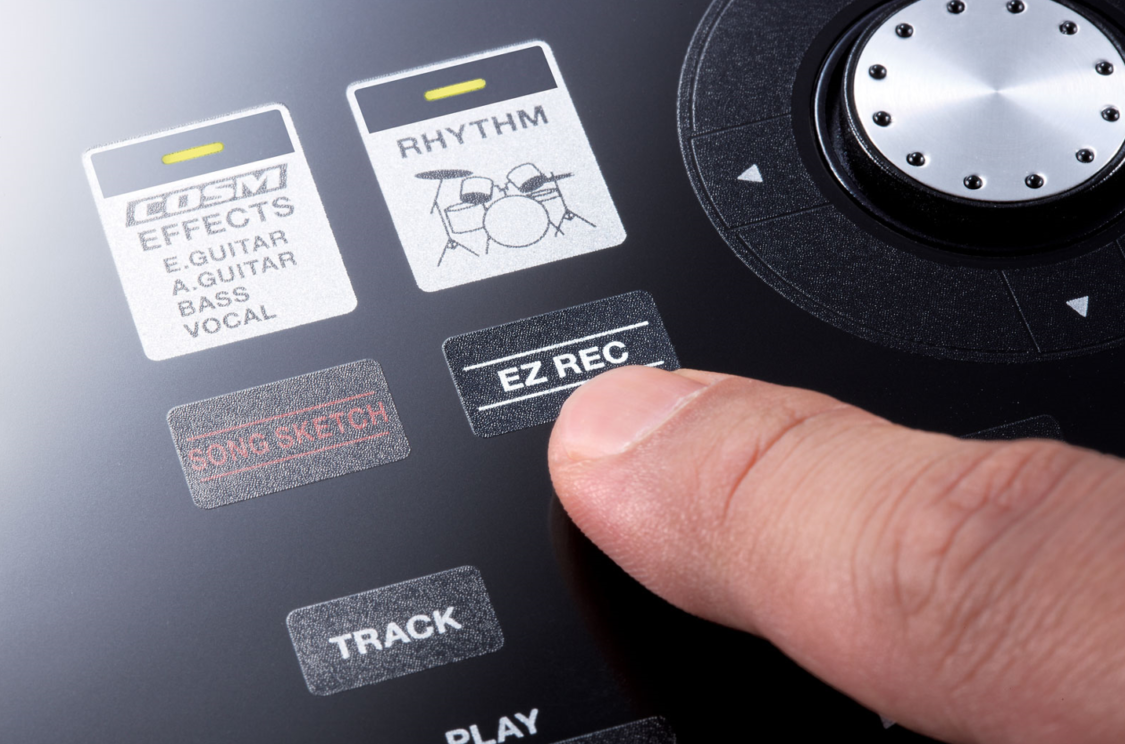Review of the BOSS BR-800 Digital Recorder
Role of BOSS BR-800 Digital Recorder in My Practice Setup
Exploring the Evolution of Stand-Alone Multi-Track Recorders
As I look back on my journey with stand-alone multi-track recorders, I fondly recall my initial foray into the world of cassette-based recording with the Tascam 4-track Porta05 ministudio in the mid-90s. While it served its purpose, the limitations of cassette tape became increasingly apparent, particularly its degradation after numerous takes. However, in 2000, a game-changing device emerged—the Boss BR-8. This innovative recorder utilized zip disks for storage and offered improved 24-bit digital quality. Although the need to switch disks, which were becoming scarce, posed a challenge (as they could only hold about 3 songs per 100MB mini disk), I managed to work around it by incorporating an external drum machine/keyboard. This allowed me to create tracks that satisfied my musical aspirations.
This positive experience instilled in me a deep appreciation for Boss products and fueled my eagerness to acquire its successor, the compact-flash card-based Boss BR-600, when it hit the market in 2007.
The Boss BR-600 was noticeably smaller in size compared to the BR-8 and sported sleek rubber buttons reminiscent of my beloved ZX Spectrum 48k from years past. Its captivating champagne hue added to its charm. What truly won me over were its impressive features. The BR-600 boasted larger, quieter, and more accessible storage options, making it both convenient and affordable. Its USB connectivity allowed for seamless song transfer to a PC, expanding the possibilities of my recording process. Furthermore, the inclusion of twin built-in condenser microphones enabled quick and effortless idea capture. However, the highlight for me was the built-in drum machine, which added a whole new level of creativity and versatility to my recordings.
The BR-600’s exceptional features didn’t stop there. Its COSM vocal and guitar amp models, including the highly impressive GUITAR to BASS patch, provided endless hours of delightful recording sessions. Whether I needed to fine-tune my vocal performances or experiment with various guitar tones, the BR-600 never failed to deliver. Its intuitive interface and remarkable sound quality made it a joy to work with, inspiring countless musical explorations and capturing my artistic vision.
The evolution from the cassette-based Tascam 4-track to the zip disk-equipped Boss BR-8 and ultimately to the compact-flash card-powered Boss BR-600 marked significant milestones in my recording journey. Each step brought improved convenience, enhanced features, and expanded creative possibilities. These stand-alone multi-track recorders paved the way for my musical expression and left a lasting impression on my artistic endeavors.
A Journey Through Stand-Alone Multi-Track Recorders
However, my focus was temporarily diverted when I delved into the complex world of DAWs (Digital Audio Workstations) and dedicated USB audio interfaces, constantly grappling with frustrating latency issues. Despite my unwavering efforts to optimize my setup with a DAW, I could never quite attain the satisfactory results I desired (for a more in-depth account, please refer to the provided link). Nonetheless, during this time, I persisted in using the reliable BR-600 for my recording needs until 2010, when its successor, the BOSS BR-800 Digital Recorder, made its grand entrance onto the music scene. Since then, the BR-800 has effortlessly claimed the title of my trusted and preferred device, continuing to serve as my go-to companion in my musical endeavors up to this very day.
Initial Impressions: A Testament to BOSS’ Progression

True to my expectations of BOSS, the BR-800 is built upon the foundation set by its predecessor, the BR-600. The internal microphones received upgrades, compact-flash gave way to SD-Card storage, the interface underwent a streamlined transformation, with the rubber buttons replaced by a modern touch-screen layout, and the screen size increased. While the new hardware was slightly larger than the BR-600, it boasted an array of enticing new features, most notably the ability to function as a USB audio interface—marking a significant first for the BR series.
BOSS BR-800: Unleashing the Power of Sketch Recording
A notable upgrade from its predecessor, the BR-600, the BOSS BR-800 introduces a dedicated button called ‘Song Sketch’. With a single press, you effortlessly enter your preferred recording mode. Personally, I have configured it to utilize the internal mics, making it an indispensable alternative to using a separate PCM recorder. Even now, the BR-800’s internal mics outshine any mobile phone when it comes to recording band rehearsals or gigs. However, for quick rough ideas, I still find my phone more convenient due to its speed and simplicity.
BOSS BR-800: An Essential Practice Tool
The versatility of the BOSS BR-800 as a USB interface has seamlessly integrated it into my home practice setup. Gone are the days of needing a separate guitar amp and effects pedals; now, all I require is the BR-800 and my PC connected to the same set of desktop monitors. With this setup, I can easily play back tracks from platforms like YouTube or Windows Media Player, while the BR-800’s exceptional COSM models generate incredible guitar sounds. While it may not perfectly replicate the response and dynamics of a cranked-up tube amp, it delivers impressive tones that are ideal for practicing at lower volumes. In fact, the tonal range accessible through the BR-800 surpasses the limitations of a single amplifier, allowing for a diverse palette of sounds.
One of the standout features of the BR-800 is the ability to create and instantly recall user patches for various styles, including clean, crunch, lead, acoustic, vocals, bass, and more. This convenience enhances the overall experience, as I can effortlessly switch between different tones to suit my practice needs. Whether I’m seeking a clean and pristine sound or a gritty and overdriven tone, the BR-800 has me covered.
The BR-800’s USB interface functionality combined with its exceptional COSM models and patch recall capability make it an invaluable tool in my practice routine. It not only eliminates the need for additional equipment but also provides a wide range of tones that surpass the capabilities of a single amplifier. With the BR-800, I can focus on honing my skills without compromise, enjoying the convenience and versatility it brings to my home practice sessions.
BOSS BR-800: Abandoning the Stand-Alone Multi-Track Format
As I delved deeper into exploring the BR-800’s capabilities, I was taken aback to discover that, almost unbelievably, it lacks drum track editing functionality. I took a step back, consulted the manual, and scoured online resources, only to have my disappointment confirmed. What’s more, the track editing features have been significantly dumbed down. At this point, I couldn’t help but feel let down, especially considering the £399 price tag (at that time), particularly since all these features were present in the BR-600.
The microphones were undoubtedly impressive, and the song sketch function proved to be quite useful. I particularly found the “EZ REC” feature valuable as it offered defaults and suggestions to simplify the setup process. However, as I held it in my hands, I couldn’t help but feel like I had an expensive sketch pad. Unlike the BR-600, the limited drums prevented me from creating complete songs, and the absence of editing features made the process of song creation cumbersome. To effectively utilize the BR-800, I was compelled to revert to using DAWs, which unfortunately came with latency issues. Regrettably, the BR-800 signifies BOSS’ departure from the stand-alone multi-track format.
The BOSS BR-800 as a USB Audio Interface
I immersed myself once again in researching DAWs and eventually settled on Ableton Live, finding it to be the most intuitive option to work with. It provided me with a comprehensive range of editing options that catered to all my needs. To enhance my drumming experience, I chose ToonTrack EZ-Drummer, which not only delivered superior sound quality but also offered unparalleled flexibility compared to any BOSS BR series recorder. Integrating the BOSS BR-800 into my setup was a game-changer. I now had the perfect combination of tools at my disposal. The DAW on my PC seamlessly handled editing, drums, general project management, and data storage, while the BR-800 flawlessly managed monitoring duties. It showcased its brilliance with the remarkable COSM vocal and guitar effects, all without any hint of latency.
In the past, I had ventured into the realm of DAWs, albeit relying on dedicated USB audio interfaces that lacked the convenience of vocal and guitar amp modeling. During this period, I enthusiastically experimented with various effects plugins within the DAW, hoping to enhance my recordings. Unfortunately, I soon encountered a persistent hurdle—latency issues that grew more troublesome when multiple effects were applied to the monitor send. These challenges made it increasingly difficult to achieve the desired results.
However, my experience took a transformative turn when I got my hands on the BOSS BR-800. This exceptional device brought an end to the frustrations of latency issues that had plagued my previous endeavors. With the BR-800, I was able to explore a world free from such problems. It effortlessly handled the application of multiple effects, providing a seamless and hassle-free experience. Whether I wanted to experiment with vocal enhancements, simulate guitar amplifiers, or delve into a plethora of other effects, the BR-800 delivered outstanding performance without any noticeable latency issues. It truly revolutionized my recording process, allowing me to focus on the creative aspects without the technical constraints that had hindered my progress before.

The Competition
Zoom R8
The Zoom R8 offers a similar set of specifications as the BOSS BR-800, but with the added advantage of including editing features that are absent in the BR-800. Furthermore, Zoom’s amp modeling capabilities have always been impressive and continue to be a standout feature of the R8.
BOSS GT-001
Marketed as a desktop GT-100 Guitar Multi-Effects unit, the compact BOSS GT-001 comes close to emulating the functionality of the BR-800 with its inclusion of a microphone input. However, it falls short in terms of lacking internal microphones and a dedicated vocal processor.
TASCAM DP-32-SD
TASCAM’s latest flagship Portastudio, the DP-32-SD, boasts an extensive array of features. However, the question remains: can it deliver amp simulations on par with the Zoom R8 or BOSS GT-001? Despite its affordability, its ability to match the quality of the amp simulations offered by its competitors is a point of consideration.
Conclusion
In 2010, BOSS introduced the BR-800 Digital Recorder, which has remained an invaluable tool and solution for me. Over the years, I have continued to utilize it for practice sessions, capturing ideas and performances, and most notably as a remarkable USB audio interface that allows me to monitor and record vocal and guitar tracks without latency issues. The COSM vocal and amp models consistently impress me with their incredible sounds and versatility. Despite the unfortunate decline of stand-alone “portastudio” style recording interfaces, I have never felt the urge to upgrade in the six years since I acquired the BOSS BR-800. It simply enables me to focus on the task at hand—creating music—and I cannot give a higher recommendation than that.
Events
Contact
- +1 952-290-1163
- 1443 Oral Lake Road
New Prague, MN 56071
About Musical Events Tours

Musical Events Tours is group and individual travel to music events outside of the country.
The main value of our services is a full package of necessary attributes for carefree attendance of your favorite musical event. Starting from exclusive and sometimes unaffordable tickets, comfortable transportation, flights, as well as transfers and optimal accommodation.